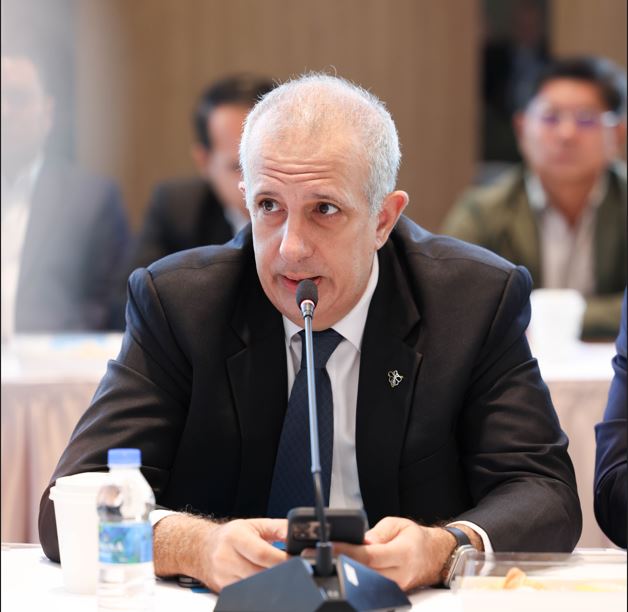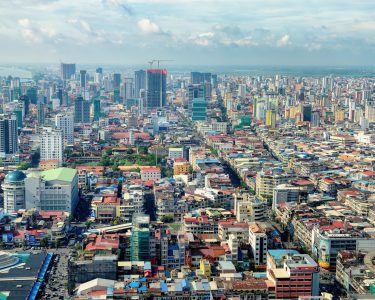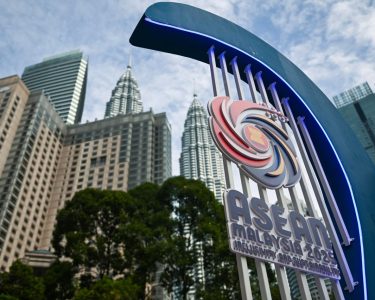Arnoud Darc
Cambodia’s prosperity rests on two engines: exports and investment. These engines power our factories, employ our young people, and sustain millions of families. Today, more than half of our exports go to the United States and the European Union, while another third flows through our Asian neighbors. These markets are our lifelines.
I write this having sat across from union leaders defending workers’ wages and beside government officials grappling with reform. After weeks and months in these negotiations, one truth emerged: Cambodia’s competitiveness crisis isn’t about choosing between workers and business, it’s about fixing the systems that hurt both.
Borders are the bridges that connect Cambodia to the world. When these bridges are efficient, orders stay, jobs grow, and revenues flow. When they are clogged with delays, hidden costs, and leakages, the entire nation pays the price.
The Risks We Face
Cambodia is being squeezed from both sides. On one side, we face tariffs abroad: U.S. duties of 19% that expose the fragility of our cost structure. On the other side, we face inefficiencies at home: unofficial fees, long clearance times, and porous checkpoints that make illicit trade easier.
Read More: Cambodian Unions Push for Higher Minimum Wage in 2026 as Living Costs Rise
When union leaders told me workers can’t survive without wage increases, they were right. When factory owners showed me, orders moving to Vietnam, they weren’t bluffing. We’re trapped by our own inefficiencies.
The result is a painful contradiction: our borders are too expensive for the honest and too easy for the dishonest. Nearly half of all cigarettes sold in Cambodia are illicit, costing the state hundreds of millions in lost tax revenues that should go to schools and hospitals.
The Regional Benchmark
Our neighbors have shown what is possible.
– In Vietnam, containers clear in 1–2 days; in Cambodia, it often takes 3–5.
– Trucking goods from Phnom Penh to Poipet can cost nearly $700; in Vietnam, it is about $194, in Indonesia $145.
– Cambodian industry still pays almost double Vietnam’s electricity rates.
As one exporter told me during our reform discussions: “We lost three major buyers to Vietnam last year purely on clearance delays. These reforms would bring them back.”
And when Thailand introduced a single-window system, clearance times dropped by 40% in the first year. This is not theory. It is already happening. Orders are shifting to where costs are lower and reliability stronger.
Borders as Bridges
Cambodia still has a powerful opportunity. The U.S. and EU remain our largest markets. ASEAN and East Asia are eager to trade more with us. Investors are watching carefully to see if Cambodia can make its borders faster, fairer, and more transparent.
Reforming our borders is the fastest way to defend our existing markets, diversify our exports, and restore investor confidence.
Every Cambodian family has a stake in this.
– Workers gain job security because efficiency means more orders, not fewer jobs.
– Employers save money and attract more business when hidden costs are removed.
– Government protects revenues by cutting leakages.
– Citizens see cheaper goods, more stability, and fairer competition.
Borders are not just gates for trucks. They are bridges for rice on the table, school fees for children, and jobs for the next generation.
Quick Wins in 90 Days
Reforms do not have to take years. We can deliver visible progress in just three months:
– Reopen priority crossings.
– Introduce a single-window pilot. When Thailand did this, clearance times dropped by 40% in the first year.
– Publish clearance times weekly — specifically, the customs department (GDCE) should post them on its website every Monday, with the Minister of Commerce personally reviewing monthly trends.
– Launch green lanes for exporters with 95%+ compliance records. Trusted operators should move quickly, while inspections focus on higher risks.
– End duplicate and unofficial fees with a single, transparent payment system.
Medium-Term Actions (12–18 Months)
To build lasting competitiveness, Cambodia should:
– Digitize clearance and expand risk-based inspections.
– Strengthen joint enforcement to shut down illicit trade channels.
– Reduce inland trucking costs through targeted public–private partnerships (for example, upgrading rail links from Phnom Penh to Sihanoukville, or piloting bonded warehouses at Poipet).
– Report monthly to the Council of Ministers on clearance times, costs, and revenues.
These steps could cut costs by $1.30–$1.50 per garment. For a factory producing one million garments a year, that means $1.3–1.5 million in savings — enough to fund a substantial monthly wage increase for 1,000 workers and still improve margins.
Reform always faces resistance from those who profit from the status quo. But having heard all sides in recent negotiations, I can confirm: the cost of inaction, in lost jobs, wages, and revenue is far higher than the discomfort of change.
A Coalition for Reform
Reform cannot succeed if government acts alone. The same union leaders who fought for wage increases and the employers who resisted them agreed on one thing during our negotiations: border reforms would deliver more for both than any wage negotiation alone.
Exporters, transport associations, and development partners are ready to support. This is Cambodia Inc. — public and private sectors working together to protect jobs and revenues.
A Clear North Star
Let us measure success clearly: cut Cambodia’s cost gap with Vietnam by half within 18 months.
This isn’t arbitrary. Our negotiations showed this would save enough to fund a 10% wage increase while keeping factories competitive. Every dollar saved is both a job protected and a wage improved.
A Call to Unity
Having spent months in these negotiations, I can say this: Cambodia doesn’t lack the will to reform or the solidarity to succeed. The unions want higher wages. The employers want lower costs. The government wants more revenue. These aren’t conflicting goals if we fix our borders. Every dollar saved there can become a wage increase, a retained order, or a funded school.
Cambodia has always risen when we act together. The moment is now, at our borders, where the future of our economy is decided every day.





